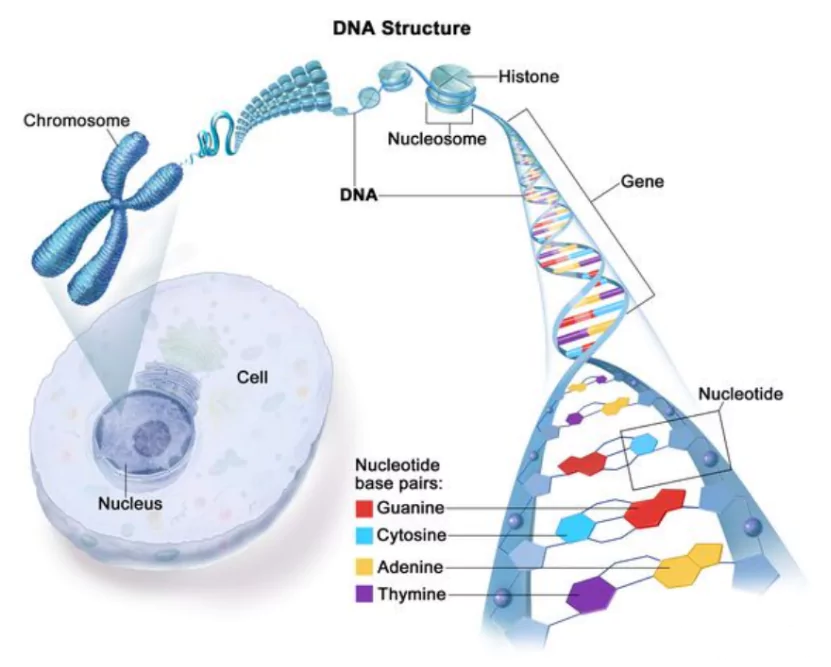Researchers at The CSIR-Institute of Genomics and Integrative Biology, New Delhi and the L. V Prasad eye institute have engineered new versions of an enzyme that can make CRISPR based technology more precise.
About The Research
- Researchers are exploring Cas9 enzymes from Francisella novicida bacteria (FnCas9) and modified and engineered new versions of FnCas9.
- Objective: To overcome the issue of the “off-target” effects of CRISPR-Cas9 system, whereby it can recognise and cut parts of the genome other than the intended portion also.
- Such “off-target” effects are more common when using the SpCas9 enzyme derived from Streptococcus pyogenes bacteria.
- Process: The researchers tinkered with amino acids in FnCas9 that recognise and interact with the PAM sequence on the host genome to increase the binding affinity of the Cas protein with the PAM sequence.
- The Cas9 can then sit on the DNA in a stronger configuration, and the gene editing becomes much more effective.
- Experiment:
- Precision in Gene Editing: The researchers used enhanced FnCas9 to edit the genome of human kidney and eye cells grown in lab dishes. The enzyme not only edited genes in these cells at a better rate than did SpCas9, it also showed negligible off-target effects.
- Treating Genetic Disorders: The Researchers tested the enzyme’s efficiency at correcting a genetic mutation that causes Leber congenital amaurosis type 2 (LCA2), a form of inherited blindness.
- Leber congenital amaurosis type 2: A single mutation in the RPE65 gene results in the loss of expression of a protein called retinal pigment epithelial-specific (RPE65), resulting in severe vision loss.
- Future Scope: The team’s next assignment is to work on adapting the system to different delivery methods as well as reducing the size of the enFnCas9.
- Scaling up the Technology: The team plans to scale up and manufacture therapeutic solutions for multiple genetic disorders by licensing the technology to Indian companies.
Enroll now for UPSC Online Course
Significance
- Enlarged Scope for Gene Editing: The researchers also engineered the enhanced FnCas9 to be more flexible and edit the otherwise harder regions of the genome opening up more avenues for gene editing.
- Increased Detection and Precision: An enhanced FnCas9-based diagnostic could target almost twice the number of changes compared to FnCas9, increasing the scope of detecting more disease-causing genetic changes
- Effective Tool in the Treatment of Inherited Blindness Conditions: The researchers delivered a CRISPR system with the enhanced FnCas9 enzyme to correct the mutation responsible for low levels of the RPE65 protein.
- When the edited cells were sequenced it was found that the CRISPR tool had corrected the mutation showing normal levels of the RPE65 protein.
- Some reports suggest that such person-specific retinal cells can be transplanted back into a person to treat inherited blindness conditions like LCA2.
- Avenues for Affordable Therapeutics: An indigenous intellectual property for such a high precision editor, puts India in a better position to develop newer therapeutics at affordable costs for people in low- and middle-income countries.
About Genes

- A gene is the basic physical and functional unit of heredity passed from parent to child.
- Genes are made up of sequences of DNA and are arranged, one after another, at specific locations on chromosomes in the nucleus of cells.
- Base Pairs: The information in DNA is encoded in genetic building blocks called base pairs. In humans, genes vary in size from a few hundred DNA base pairs to more than 2 million base pairs.
- Function: They contain information for making specific proteins that lead to the expression of a particular physical characteristic or trait, such as hair color or eye color, or to a particular function in a cell.
- Some genes act as instructions to make molecules called proteins. However, many genes do not code for proteins, instead they help control other genes.
|
Check Out UPSC CSE Books From PW Store
Clustered Regularly Interspaced Short Palindromic Repeats (CRISPR Cas9)
- It is a Gene Editing tool and is a precise way of altering DNA. It cuts out specific strands of DNA, and replaces them with new strands.
- CRISPR: It is the DNA-targeting part of the system which consists of an RNA molecule, or ‘guide’, designed to bind to specific DNA bases through complementary base-pairing.
- Cas9: It stands for CRISPR-associated protein 9, & is the nuclease part that cuts the DNA.
- The CRISPR-Cas9 system: The technology was adapted from a naturally occurring genome editing system used by bacteria as an immune defense which helps the organisms recognise and fight off similar viruses in the future by acting like an immune system.
 Process: The CRISPR-Cas9 gene editing tool uses a guide-RNA (gRNA) designed to find and bind to a specific part of the target genome. Process: The CRISPR-Cas9 gene editing tool uses a guide-RNA (gRNA) designed to find and bind to a specific part of the target genome.-
- The gRNA directs an enzyme, Cas9, to the target site, which is followed by a short DNA sequence called protospacer adjacent motif (PAM).
- Cas9 recognises and binds to the PAM sequence, and acts as a molecular scissor that snips some damaged DNA, triggering the cell’s DNA repair system, which repairs the snipped part to insert the correct DNA sequence.
- Recognition: In 2020, Emmanuelle Charpentier and Jennifer A. Doudna were awarded the Nobel Prize in chemistry for discovering CRISPR-Cas9.
- Application: Researchers use CRISPR to edit DNA precisely and can be used for various purposes,
- Treating genetic diseases; Creating drought-resistant plants; Modifying food crops; De-extinction projects.
|
![]() 1 Aug 2024
1 Aug 2024
